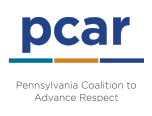A version of this article was originally posted on the UMN Women’s Center Blog.
The National Sexual Violence Resource Center promoted Sexual Assault Awareness Month (SAAM) throughout April as a way of increasing public awareness around issues related to sexual violence and assault. Given that so many acts of sexual aggression happen each year at college campuses throughout the United States, it is time we all worked together to bring this pressing issue to light.
The statistics are alarming. According to the National Institute of Justice, 1 in 5 women and more than 6 percent of men are sexually assaulted during their time in college. The numbers don’t lie. After recent sexual assault incidents at Boston University and other prestigious institutions, the need for sexual assault awareness is pressing for today’s youth culture. After all, the habits, ideologies and patterns formed around sexual identity at this definitive stage could have a lifelong impact.
Keep reading for a few important tips on how to educate college students, administrators and educators on the importance of sexual awareness education throughout the year.
Begin the Conversation
Open communication is essential for raising awareness about the harsh realities of sexual violence on campus. It’s not enough to send campus police to a few hours of sexual assault training or require new students to sit through a quick freshman orientation lecture and hope that this will be enough to prevent sexual violence..
A healthy on-campus dialogue must take place between administrators, educators, campus police and the student population to ensure that everyone is aware of the dangers and characteristics of on-campus sexual assault.
Here are a few questions to help get the process started:
● How is sexual assault defined?
● What is the prevailing on-campus student culture in regards to sex and sexuality?
● Are university officials truly aware of the on-the-ground reality of our particular campus?
● Do students of both genders feel safe on campus?
● What safety measures does the institution have in place to prevent sexual violence?
● Does the institution have any measures in place to respond to sexual assaults that happen on campus?
● How can students be truly engaged in a thorough conversation about sexual aggression?
Once you’ve answered these preliminary questions with input from all the necessary stakeholders (administrators, educators and students), you’ll be on your way to building a compelling dialogue around sexual assault awareness on campus...and off.
Build Healthy Attitudes
The anecdotes are endless. A 2011 complaint filed by female Yale students alleged that fraternity pledges paraded through public spaces chanting “No means yes, yes means anal,” while a recent incident at Boston University saw the university’s student newspaper satirizing gang rape after previous episodes of sexual assault on campus. These incidents and the numerous others that happen at colleges and universities each year make one thing resoundingly clear: building healthy attitudes toward sex, sexuality and gender is one huge hurdle of true sexual violence awareness.
How to do it? Good parenting contributes to healthy sexual attitudes but there are ways that committed institutions of higher education can contribute to the growth process as well:
● Offer sex education courses that place emphasis on positive sexual encounters
● Highlight services, books and in-person consultations with on-site, licensed sex therapists and counselors
● Define consent and how to talk about, accept or decline it in a respectful fashion
Go One Step Further
Sexual aggression isn’t only about rape. In fact, stalking, relationship violence and other forms of sexual aggression all fall under the sexual assault umbrella. Colleges and universities around the country need to review all incidents that happen under their purview to ensure every case is handled with sensitivity and the utmost care.
SAAM takes place each April, but it’s up to concerned institutions of higher education to keep the flame alive throughout the year.
Author Bio
Abbott Shea and Cary Barlow provided this article in partnership with Global Compliance. Abbott and Cary spent time in April, and now in May, spreading the word for sexual violence awareness. Besides writing posts to raise awareness at large, Abbott and Cary have assisted Global Compliance in creating sexual harassment training resources for the workplace, including a sexual harassment training quiz through PowerPoint.
